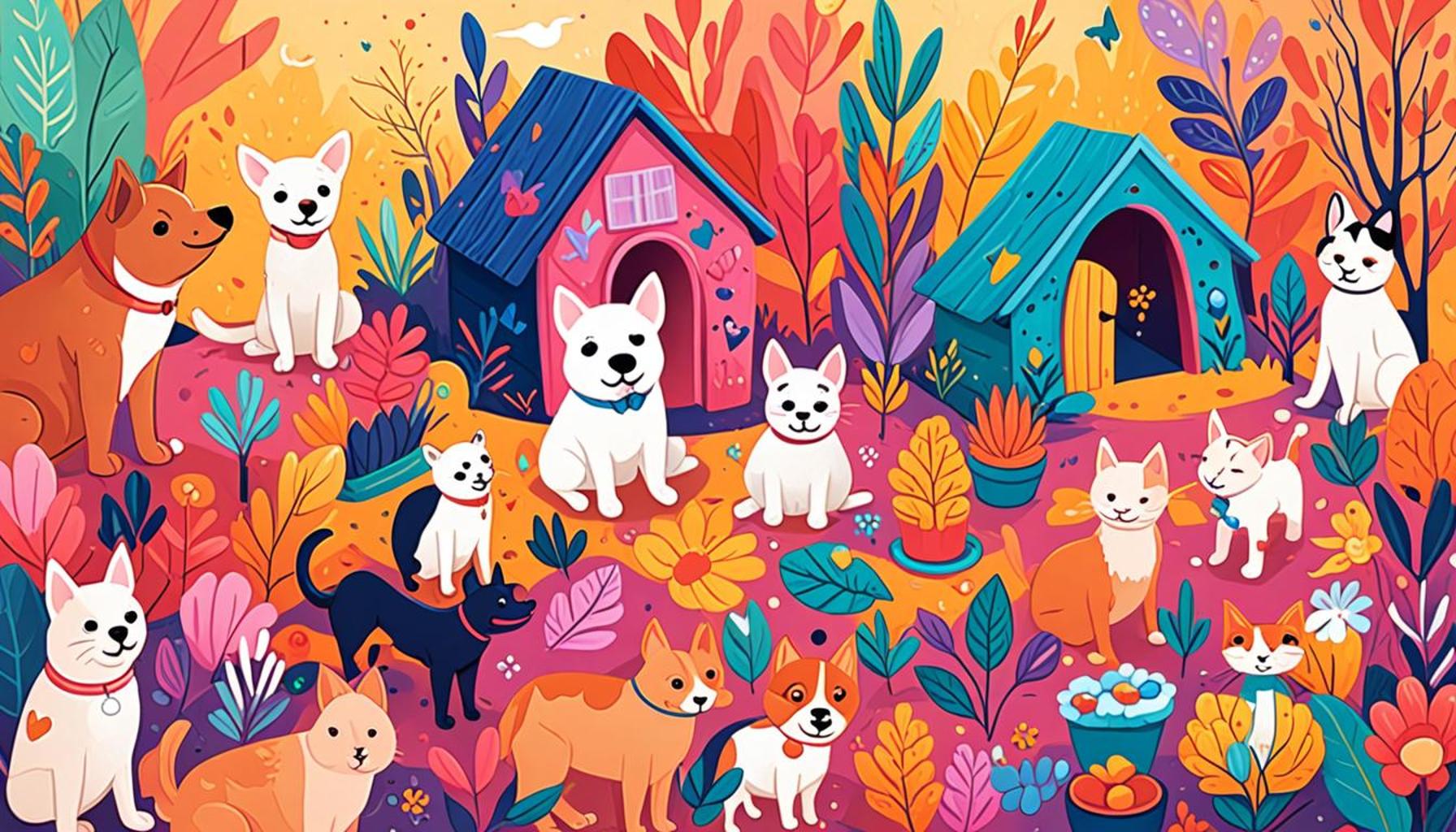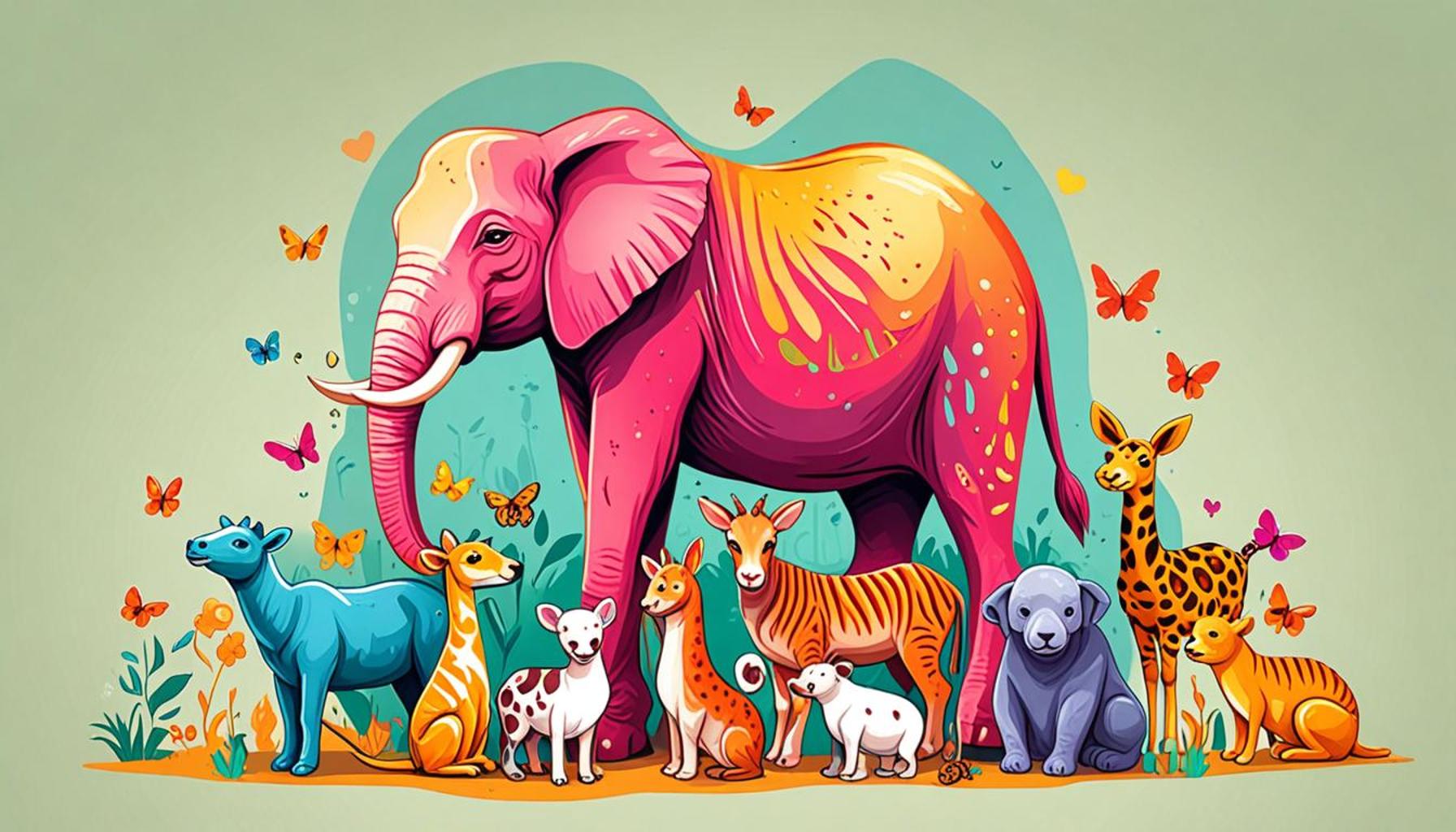Animal Adoption and Technology: How Apps and Online Platforms Are Facilitating the Process

The Changing Face of Pet Adoption
In recent years, the paradigm of animal adoption has shifted dramatically, largely driven by advances in technology. This evolution allows prospective pet owners to engage in the adoption journey with unprecedented simplicity and assurance. Today, innovative online platforms and mobile applications facilitate connections between potential adopters and animals seeking forever homes like never before.
Key Features of Adoption Technology
- User-Friendly Interfaces: Modern platforms boast intuitive designs that cater to users of all ages. By providing easily navigable interfaces, these websites and apps enable prospective adopters to search for pets based on their preferences without the frustration often experienced in traditional methods.
- Comprehensive Filters: Users can refine their searches through a variety of filters such as breed, age, size, and even temperament, allowing them to find the ideal pet that aligns with their lifestyle. For example, a family with young children may look for medium-sized dogs known for their gentle dispositions, enhancing the likelihood of a harmonious match.
- Real-Time Updates: Many platforms now offer notifications about newly available pets and local adoption events. This ensures that users stay informed about opportunities to meet adoptable animals in their vicinity, fostering a sense of urgency and excitement in the adoption process.
Furthermore, technology enriches the experience for both potential adopters and animal shelters. Virtual meet-and-greets empower interested individuals to interact with animals from the comfort of their own homes, reducing the stress often associated with initial visits to shelters. This modern approach not only makes it more convenient for prospective pet owners but is also essential in addressing the staggering number of animals awaiting adoption across the United States, estimated at over three million.
Significant Impact on Adoption Rates
The impact of these technological advancements on pet adoption rates is significant and measurable. Studies indicate that the rise in online adoption applications has streamlined the process, effectively reducing bureaucratic obstacles that frequently deter potential adopters. This digitization correlates with increased adoption rates, as potential pet owners find it easier to navigate the necessary paperwork and procedures.
As we delve deeper into how apps and platforms are shaping the future of animal adoption, it becomes apparent that technology is no longer merely a convenience but a crucial partner in combating pet homelessness. For those passionate about animal welfare, this transformation offers renewed hope and opportunities. Through these digital tools, lasting bonds are formed between pets and their permanent families, paving the way for a future where every animal has a loving home.
In summary, the convergence of technology and animal adoption not only enhances the process for potential adopters but also amplifies the mission of shelters and rescue organizations across the nation. Embracing these innovations may very well be the key to reducing the number of animals in shelters and celebrating a new era of pet ownership that is accessible and joyful.

LEARN MORE: Click here to discover the benefits of positive reinforcement
Revolutionizing Connections: The Role of Technology in Adoption
The integration of technology into the animal adoption process has profoundly changed how shelters and rescue organizations operate. Gone are the days when potential adopters would rely solely on local newspapers or word-of-mouth to discover available pets. Today, numerous mobile applications and online platforms are at the forefront of this transformation, making the journey toward pet ownership more interactive and informative.
Each platform offers unique tools designed to create an immersive experience for users, thereby enhancing the bond between potential adopters and their future pets. These platforms not only promote pet visibility but also help build a narrative around the individual animals, which is vital in fostering emotional connections. Here are a few notable features redefining the landscape of animal adoption:
- Adoption Profiles: Each animal available for adoption is often featured with a comprehensive profile that includes photographs, descriptions, and videos showcasing their personality. This transparency helps users gain insights into the animal’s behavior, assisting them in making informed decisions.
- Social Media Integration: Many adoption platforms leverage popular social media channels to share success stories and highlight animals in need of homes. This strategy not only increases visibility but also cultivates a sense of community among animal lovers. Platforms like Instagram and Facebook have been instrumental in amplifying voices of animals that might otherwise go unnoticed.
- Community Engagement: Some apps facilitate interaction among users through forums, chat features, and community events. This engagement fosters support networks where adopters can share experiences, exchange advice, and celebrate their journey together, building a sense of belonging in the world of pet ownership.
The impact of technology extends beyond convenience to significantly improving the welfare of animals waiting for adoption. By enabling shelters to reach a wider audience, these tools help level the playing field for animals facing the risk of euthanasia in overcrowded facilities. Research conducted by the ASPCA shows that approximately 670,000 dogs and cats are euthanized in U.S. shelters each year, a figure that can be mitigated with effective digital outreach and engagement.
Additionally, many platforms have incorporated educational elements aimed at potential adopters, sharing essential information about responsible pet ownership and the importance of spaying and neutering. This proactive approach not only ensures that adopters are well-prepared for the responsibilities of pet care but also helps in reducing future abandonment and surrender rates.
As the technology behind animal adoption continues to innovate, it creates broader opportunities for all stakeholders involved in the adoption process. Pet shelters are now able to function more efficiently while potential adopters gain access to a wealth of information and resources at their fingertips. This symbiotic relationship between technology and animal adoption not only simplifies the process but also emphasizes the importance of finding loving homes for every animal in need. The future looks promising, and every pet certainly deserves a chance for a better life.
| Advantages | Key Features |
|---|---|
| Increased Reach | Apps and platforms allow shelters to showcase pets to a broader audience, increasing potential adoptions. |
| Convenience | Users can browse available pets, fill out applications, and even complete adoption processes from the comfort of their homes. |
| Transparency | Detailed profiles and histories of animals help prospective owners make informed decisions. |
| Community Engagement | Online platforms foster a sense of community, where adoption stories, advice, and volunteer opportunities are shared. |
The integration of technology into the animal adoption process has revolutionized the way shelters and potential pet owners connect. Now, platforms like Petfinder and mobile applications enable a seamless experience, allowing users to filter through various breeds, ages, and locations. This ease of access encourages more people to consider adoption. Moreover, many platforms provide thorough information about each animal, including medical history and behavioral traits, which empowers adopters to make informed choices. Furthermore, the rise of social media has amplified the outreach for specific pets that are in urgent need of homes, bringing attention to animals that might otherwise go unnoticed.Technological solutions don’t just benefit adopters; they also streamline operations for shelters. Data management systems help animal welfare organizations track animals, adoptions, and statistics more effectively. This capability ensures that shelters can allocate resources and efforts towards animals that require immediate assistance. Overall, technology is enhancing the entire animal adoption ecosystem, making it easier and more impactful for all involved.
DISCOVER MORE: Click here to learn about positive reinforcement techniques
Bridging the Gap: Ease of Access and User Experience in Animal Adoption
The role of technology in animal adoption extends beyond simply presenting animals for adoption; it plays a crucial part in enhancing the user experience and streamlining processes. Adopters today are looking for a seamless, user-friendly platform that removes barriers to finding a perfect pet. With the proliferation of animal adoption apps and websites, potential adopters can access a wealth of information about animals available for adoption right from their smartphones or computers. This accessibility ensures that individuals interested in adopting are not limited by geographic constraints, thus increasing the chances of finding a match.
One of the most significant advancements in this area is the use of artificial intelligence (AI) to optimize pet-matching algorithms. These algorithms analyze user preferences—such as desired pet size, breed, temperament, and activity level—and suggest animals that meet these criteria. This tailored approach minimizes the time and effort required to browse through countless profiles, effectively bridging the gap between shelters in need and people ready to adopt. In some cases, these AI-driven systems also factor in location, helping to connect shelters with potential adopters in their vicinity, thereby promoting local adoptions.
- Augmented Reality (AR) Tools: Some of the more innovative platforms have started incorporating AR technology, allowing users to visualize how a pet might fit into their home environment. Imagine pointing your smartphone at your living room and seeing a virtual image of a dog sitting on your couch—this kind of interactivity fosters deeper emotional connections and may help individuals commit to adoption.
- Application Features: Many apps now come equipped with additional features that enhance the adoption experience. For instance, users can find resources such as vet recommendations, training tips, and feeding guidelines, all in one place. Some apps even provide scheduling functions for veterinary visits, pet training classes, and pet-sitting services, making the adoption journey as smooth as possible.
- Feedback Mechanisms: User feedback is vital in app development. Many platforms encourage adopters to share their experiences, allowing organizations to gather data on what works and needs improvement. This iterative development process makes it easier for shelters to evolve their practices based on adopter input, ultimately improving the chances of successful, long-term placements.
The growth of these online platforms equates to a ripple effect that benefits not only shelters and adopters but also enhances the lives of countless animals. For instance, a study by the Paw Print Genetics indicated that using digital platforms can lead to shorter shelter stays for animals, significantly reducing stress for pets and improving their overall well-being. By decreasing the length of time animals spend in shelters, we also help increase the chances of unique and diverse pets finding their forever homes.
Moreover, many organizations are beginning to use data analytics to improve operational efficiencies. By analyzing trends in pet adoption rates and user engagement, shelters can better understand which animals require targeted outreach or special considerations. With the ability to collect and interpret data, we’re moving towards a more informed approach to animal adoption that ensures every animal receives the attention it deserves.
The marriage of technology and animal adoption represents a promising front in the fight against pet homelessness. With the right tools, stakeholders can engage with adopters more effectively, making the path to adopting a beloved family pet easier than ever. The future may see even more advanced technological integrations, but one thing remains clear: when technology and compassion unite, the possibilities for better animal welfare are boundless.
LEARN MORE: Click here to discover the benefits of socialization
Conclusion: A New Era of Animal Adoption through Technology
The landscape of animal adoption is undergoing a profound transformation, largely driven by technological advancements that enhance accessibility and effectiveness. As we explore the intersection of technology and animal welfare, it becomes clear that apps and online platforms are not merely tools, but vital conduits that connect potential adopters with animals in need of homes. Innovations such as artificial intelligence for personalized matching and augmented reality for immersive experiences bridge the gap between people and pets in unprecedented ways.
Moreover, the availability of resources within these platforms, from veterinary care to training tips, equips adopters with the knowledge necessary for a successful pet ownership journey. With user feedback driving continuous improvement, organizations can adapt their practices for better outcomes, ensuring that each pet receives individual attention underpinned by data-driven insights.
Importantly, as we continue to witness the decline of pet homelessness throughout the United States, studies like that of Paw Print Genetics highlight the human and animal benefits derived from tech-based adoption solutions. Shorter shelter stays lead to healthier, happier animals, while potential adopters can navigate the process with ease from the comfort of their homes.
In conclusion, we stand at the brink of a new era in animal adoption, where compassion meets innovation. As we look ahead to the future, further advancements in technology promise to refine the adoption experience even more, creating lasting bonds between pets and people. The call to action for readers is to explore these platforms, consider animal adoption, and witness firsthand how technology is paving the way to a world where every pet can find a loving home.


